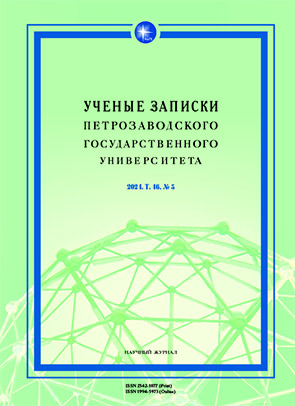МОДЕЛИ ИНТЕГРАЦИИ КАРЕЛЬСКОЙ ОЙКОНИМИИ -L-ОВОГО ТИПА В ОФИЦИАЛЬНУЮ РУССКУЮ ТОПОСИСТЕМУ
MODELS OF INTEGRATING KARELIAN -L-TYPE OIKONYMY INTO THE OFFICIAL RUSSIAN TOPOSYSTEM
Author(s): Pavel A. HorohorinSubject(s): Language and Literature Studies, Finno-Ugrian studies
Published by: Петрозаводский государственный университет
Keywords: Karelian toponymy; oikonyms; integration models; formant; adaptation; official toponymy;
Summary/Abstract: The article aims to identify ways for integrating Karelian -l-type oikonymy into official usage in the Russian language during the XVI–XX centuries. It is shown that this oikonymy played an extremely important role in the naming system for Livvi-Karelian settlements, with the suffix -la (-lu, -l) with locative semantics consistently forming the topological bases expressed by the anthroponym. The source of the material for the analysis of integration models was the manuscript of the dictionary titled Livvi-Karelian Villages from A to Ä: Dictionary of the Names of Populated Places prepared at the Institute of Linguistics, Literature and History of the Karelian Research Centre of the Russian Academy of Sciences, which includes both modern and historical oikonymy of the area of residence of Karelian Livviks in the territory of South Karelia. The analysis revealed two integration strategies: direct adaptation and suffixation. It has been established that since the XVI century (in fact, apparently before, but the lack of early documents does not allow us to state this unequivocally) three formants were used: -itsy/-ichi (Kunil → Kunevichi), -skaya (Vanhimal → Vangimanskaya) and -ovo/-evo (On’kul → Onkovo). The model of direct adaptation (Riiškal → Rishkala) appeared in documents in the XVII century and gradually took a leading position. Based on the previous studies, it is stated that the change in priorities was caused by a change in the ethnolanguage situation caused by strong Karelianization due to the influx of Karelian population from the Ladoga region. This conclusion is confirmed by another modernization process: the -itsy/-ichi model is transformed into the -litsy/-lichi model, (Kunevichi → Kunilitsy from Livv. Kuunil), i. e. the Karelian formant is not replaced by the Russian one, but is recognized as part of the stem. Direct adaptation prevails in the modern system.
Journal: Ученые записки Петрозаводского государственного университета
- Issue Year: 46/2024
- Issue No: 5
- Page Range: 55-61
- Page Count: 7
- Language: Russian

